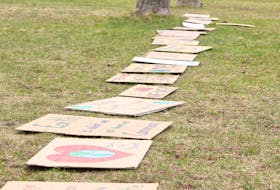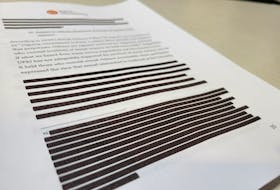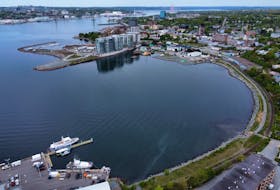I apologize in advance.
The example in the next paragraph is pathetically simplified. (And as a caveat, keep in mind that it really looks like Newfoundland and Labrador Hydro is flying by the seat of its pants as it tries to figure out how to soften the blow of the massive rate increases coming from Muskrat Falls. Because of that, things can change quickly.)

But imagine you were trying to figure out how to find the money to offset a doubling of electrical rates on your own bill.
Owning a pickup truck, you decide to sign a contract to occasionally haul someone else’s construction waste to the dump. You charge $150 a load — and by your calculations, you’ll have enough extra money to essentially keep your power rates flat. Victory!
After the plan’s made, you discover that you didn’t include the cost of gas, tipping fees at the dump, and income tax on your new $150-a-load business. As a result, you’re only going to get $72 from your $150 in business, and the budget’s in a mess. Sad day at your house.
Welcome to Newfoundland Hydro’s world.
Turns out, the power lines are going to eat up more of the money we spend than we’ll actually get to keep.
In its latest general rate application to the Public Utilities Board, Hydro came up with a novel plan. Since we’re used to paying full price for power generated by burning oil at the Holyrood Generating Station, Hydro wanted to use cheap power it can recall from the Upper Churchill project, ship it on the idle power lines that Muskrat Falls will use once it’s completed, and sell it to us as if we were still buying from Holyrood.
We wouldn’t feel the fiscal pinch, and Hydro estimated it could collect a war chest of $150 million that it could use to soften the expected doubling of power rates in 2021.
It sounds like a good plan — in fact, even though it meant paying now for costs later, the move would have let the utility ease us into higher rates, and cushion those higher rates when they came.
But it turns out that there are problems.
Back in September, Hydro was pitching the $150 million number at the PUB, and saying, “The actual savings will vary depending on: (i) the availability date of the LIL and LTA; (ii) Holyrood fuel price; (iii) energy available for import from other jurisdictions; and (iv) the costs of operating and maintaining the LIL and LTA.”
Keep your eye on the one called “(iv)”. (The LIL and the LTA are the Labrador Island Link and the Labrador Transmission Assets, the two sets of power lines that would bring power to the island and primarily, to the Northeast Avalon.)
Turns out, the power lines are going to eat up more of the money we spend than we’ll actually get to keep.
New figures that Newfoundland Hydro has provided as a result of questions about its plan at the PUB show that actually using the power lines that we’re paying to build will cost a lot more than expected.
Oh heck, I’ll let Newfoundland Hydro’s own words paint that picture: “Hydro’s response … indicates a total net savings for the period 2018 to 2019 of approximately $150 million prior to deducting the cost of using LIL and the LTA for those years. However, after the reduction of the savings to reflect the payment of the costs of using LIL and LTA, the projected deferral account balance at the end of 2019 is approximately $72 million.”
So, using the lines will cost consumers $78 million over two years, just to cover operating and maintenance costs. Eventually, maybe already, we’ll pay for return on equity as well. While we’ll pay two cents per kilowatt for the power, it looks like we’ll spend close to six cents per kWh to get it to here.
(If you really don’t want to burst a gasket, don’t think about the fact that part of that money will go to Nova Scotia-based Emera, which, as of last March, had something like a 49 per cent equity stake in the LIL.)
I don’t know about you, but optics of spending $150 million over the next two years just to tuck away $72 million to soften power bills later kind of sucks.
And if the cost for bring power across the LIL and LTA are that high, what, pray tell, will we have to pay Emera if we ever bring power here across the Maritime Link?
I shudder.
Russell Wangersky can be reached at [email protected] — Twitter: @wangersky.

![['<p>Progress on the HVdc transmission line (the Labrador-Island Transmission Link).</p>']](https://saltwire.imgix.net/hdvc-transmission-line-3145542.png?cs=srgb&fit=crop&h=568&w=847&dpr=1&auto=compress%2Cenhance%2Cformat)







